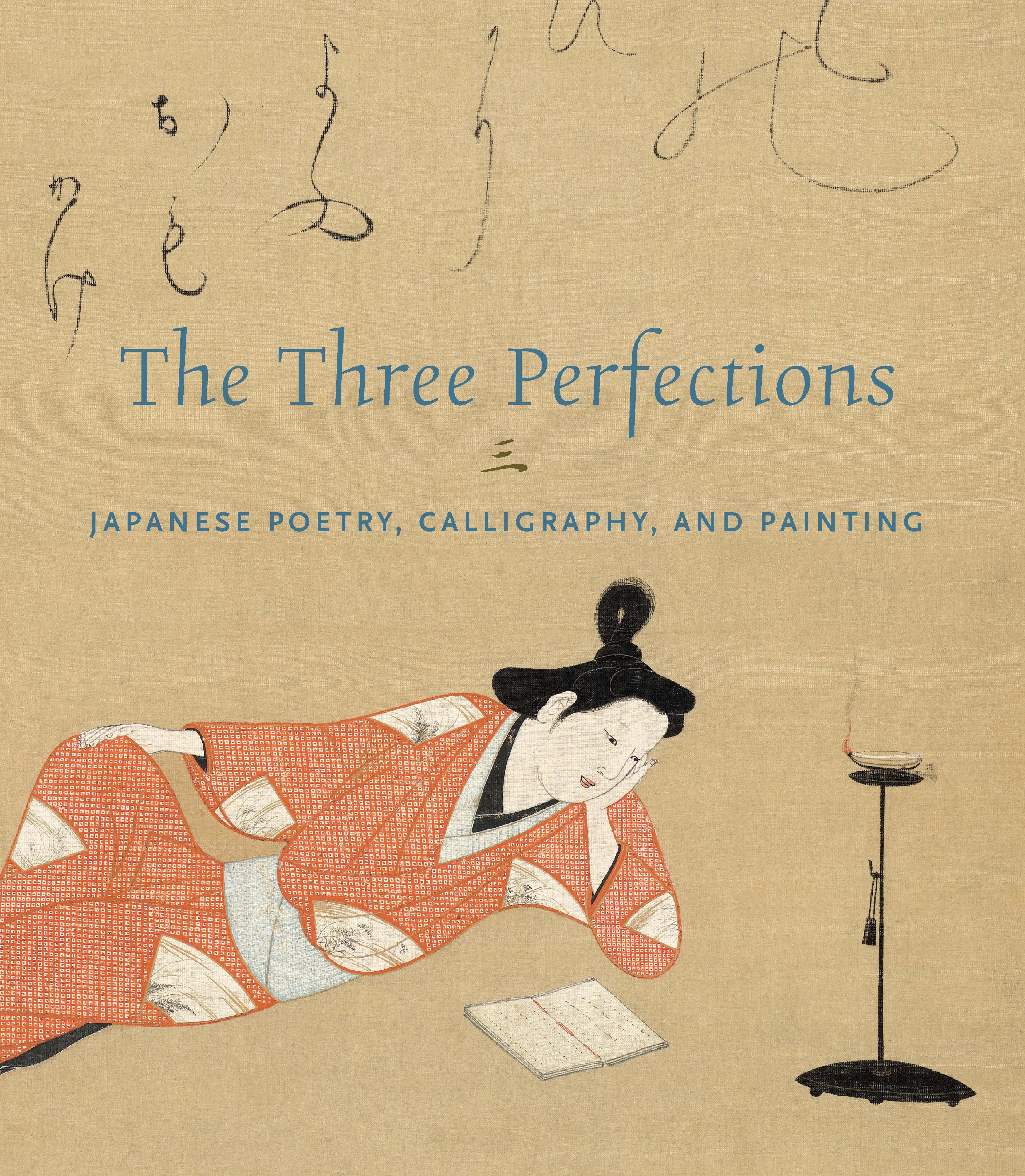Section of the Sutra on the Contemplation of Immeasurable Life, one of the “Rengeōin Fragments” (Rengeō’in-gire)
Over the centuries, sutra handscrolls were often cut up into sections and remounted as hanging scrolls to make them more suitable for display. This section is from a manuscript of the Sutra on the Contemplation of Immeasurable Life (Amitayurdhyana), in which the Buddha describes thirteen subjects of reflection to guide adherents to the Pure Land paradise. The text in this fragment describes the attributes of Kannon.
Although traditionally attributed to Emperor Shirakawa, the fragment is more likely the work of an unknown scribe. The text is executed in gold and malachite in the shakyōtai (sutra-copying) script of the Heian period. Motifs of birds and butterflies—drawn with silver pigment in the upper and lower registers, though now oxidized to a darker hue—enhance the manuscript’s elegance.
Although traditionally attributed to Emperor Shirakawa, the fragment is more likely the work of an unknown scribe. The text is executed in gold and malachite in the shakyōtai (sutra-copying) script of the Heian period. Motifs of birds and butterflies—drawn with silver pigment in the upper and lower registers, though now oxidized to a darker hue—enhance the manuscript’s elegance.
Artwork Details
- 伝白河天皇 観無量寿経断簡 蓮華王院切
- Title:Section of the Sutra on the Contemplation of Immeasurable Life, one of the “Rengeōin Fragments” (Rengeō’in-gire)
- Artist:Traditionally attributed to Emperor Shirakawa (Japanese, 1053–1129)
- Period:Heian period (794–1185)
- Date:12th century
- Culture:Japan
- Medium:Hanging scroll; gold and malachite on paper decorated in gold and silver
- Dimensions:Image: 10 1/4 × 3 15/16 in. (26 × 10 cm)
Overall with mounting: 55 1/2 × 17 15/16 in. (141 × 45.5 cm) - Classification:Paintings
- Credit Line:Mary and Cheney Cowles Collection, Gift of Mary and Cheney Cowles, 2024
- Object Number:2024.412.2
- Curatorial Department: Asian Art
More Artwork
Research Resources
The Met provides unparalleled resources for research and welcomes an international community of students and scholars. The Met's Open Access API is where creators and researchers can connect to the The Met collection. Open Access data and public domain images are available for unrestricted commercial and noncommercial use without permission or fee.
To request images under copyright and other restrictions, please use this Image Request form.
Feedback
We continue to research and examine historical and cultural context for objects in The Met collection. If you have comments or questions about this object record, please contact us using the form below. The Museum looks forward to receiving your comments.
